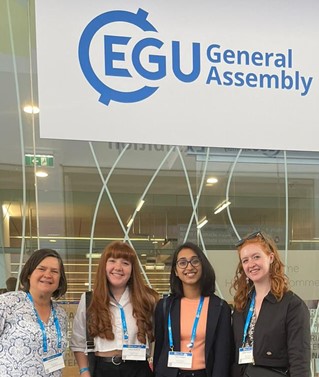Collaboration between Edge Hill University and EMODnet Geology enhances understanding of coastal hazards and paves the way for sustainable coastal management in Europe.

Edge Hill University (EHU) has made a significant contribution to the field of coastal management, as part of its collaboration with the European Marine Observation Data Network (EMODnet) Geology consortium. This work, which highlights the importance of understanding coastal resilience and vulnerability, helps inform more effective and sustainable governance of coastal regions, especially in the face of climate change.
The collaboration, involving EHU student interns and an international team of experts, has developed a new, comprehensive data product: the EMODnet Geology coastal resilience/vulnerability map. The tool provides a detailed visualisation of coastal resilience and vulnerability across Europe, offering insights at multiple scales and presenting critical information for managing coastal risks.
EMODnet is the marine data service of the EC Directorate-General Maritime Affairs and Fisheries (EC DG MARE), a large-scale initiative involving a diverse consortium of scientific and governmental partners. EMODnet Geology, one of seven themes in the data service, is a joint effort of more than 40 geological surveys and research institutions across Europe.
EMODnet Geology provides a range of accessible marine geology map products, including coastal behaviour, to support sustainable management of Europe’s seas and coastline. Edge Hill University contributes academic expertise in coastal geomorphology and, for the new coastal resilience/vulnerability data product technical skills of geography and geology student interns played a crucial role in processing and mapping key geological data.
EHU students, co-supervised by Professor Cherith Moses, EHU, and Dr Sytze van Heteren, TNO, the Geological Survey of the Netherlands, carried out the underlying GIS (Geographic Information System) digital mapping that enabled the visualisation of coastal resilience and vulnerability data. This work not only provided invaluable hands-on experience for the students but also supported an important step in advancing scientific knowledge on how coastal areas respond to changing marine processes such as erosion and flooding.
EHU’s participation in EMODnet Geology showcases its commitment to advancing environmental research and contributing to local and global efforts to build resilience against climate change. The continued development of such international knowledge-sharing partnerships is crucial in equipping coastal communities with the information and tools they need to thrive in an increasingly uncertain future.
“Our Geo students are trained in the latest digital mapping and data analyses methods, so it has been easy to assemble a team of talented EMODnet-paid interns. Together with TNO, the Geological Survey of the Netherlands, we developed the methodology, and the interns conducted the digital mapping at EHU under joint supervision. Throughout the work, we shared progress for feedback from stakeholders and end-users at national and international conferences, including Europe’s largest earth sciences conference the European Geosciences Union General Assembly. The team at TNO conducted the final visualisation of the map produced at EHU, and we have jointly published our work in the Geological Society of London’s industry-facing journal, the Quarterly Journal of Engineering Geology and Hydrogeology. Working with such talented students is a joy, and EMODnet Geology has provided important work experience to give them an advantage in the graduate careers market. They all go on to do great things!”
Professor Cherith Moses
“Having the opportunity to be an EMODnet Intern whilst at university was invaluable. It provided me with experience in geospatial analysis and data management, which opened doors to further internships and my current role. The EMODnet internship paved the way for another internship through the Space Placements in Industry (SPIN) scheme, where I gained additional experience in GIS and data science. These internships not only equipped me with technical skills but also instilled a sense of confidence that has been crucial in my professional journey as a Geospatial Analyst at NHS SCW.”
Cerys Butterill, Geospatial Analyst at NHS South, Central and West and Co-Chair of the Association for Geographic Information (AGI) Early Career Network
“My internship with EMODnet Geology provided me with valuable experience in processing environmental data and creating a Pan-European Coastal Vulnerability map. Using GIS tools like ArcGIS Pro, I developed key skills in data analysis and mapping. Interning alongside my degree at Edge Hill University also enhanced my transferable skills in scientific communication, networking, and time management. This experience deepened my passion for research in geology and inspired me to pursue a PhD, laying a strong foundation for a career in research.”
Tanvi Chopra, Postgraduate Research Student, Open University.
‘‘The EMODnet internship was instrumental in helping me get my current role. Having relevant work experience really boosted my application and gave me an insight into the industry before I graduated. It also gave me more experience using GIS, which is something I now use day to day.”
Amber Humphries, Analyst at JBA Consulting.
Access the new EMODnet Geology coastal resilience/vulnerability tool here.
Learn more about our Geography and Geology courses here.
Read our scientific journal article, explaining how the new data tool was produced, here.
